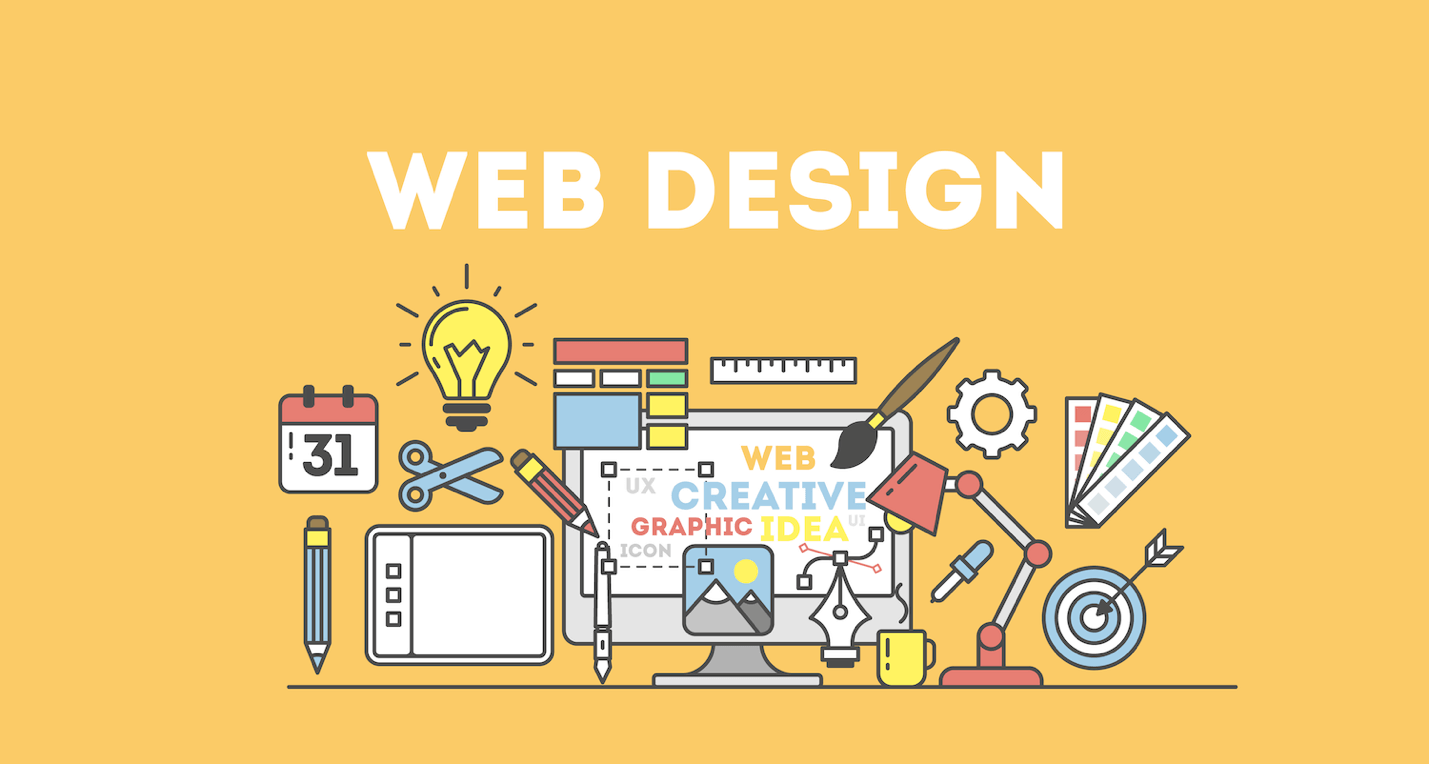Unlocking the Secrets of Effective Web Design Johannesburg Professionals
Unlocking the Secrets of Effective Web Design Johannesburg Professionals
Blog Article
Unraveling the Intricacies of Responsive Website Design and Its Effect On Availability and Functionality Throughout Numerous Instruments
Responsive website design (RWD) has become an essential technique in creating electronic experiences that are both functional and available across diverse tools. By incorporating methods such as liquid grids and CSS media queries, RWD not only boosts individual engagement yet likewise addresses essential accessibility worries for people with specials needs. As the landscape of electronic interaction remains to advance, comprehending the effects of RWD comes to be important. The ins and outs involved in attaining this balance raising relevant inquiries regarding ideal techniques and potential mistakes that call for further exploration.
Recognizing Receptive Web Design
Responsive internet layout embodies the principle of versatility, making sure that websites offer an ideal watching experience throughout a selection of devices and screen sizes. This technique uses adaptable grids, layouts, and images, enabling the material to dynamically readjust based upon the customer's tool. The rise of mobile internet usage has made responsive design not just a pattern, yet a need for modern web advancement.
At its core, receptive website design highlights fluidness and scalability. By making use of CSS media questions, developers can customize designs to differing screen dimensions, making sure that text continues to be clear and photos are displayed properly. This technique accommodates the diverse variety of devices, from smartphones to big desktop computer monitors, helping with seamless navigation and communication.
Moreover, responsive website design enhances user involvement by lowering the demand for extreme zooming or horizontal scrolling, which can take away from the customer experience. By prioritizing access, organizations can get to a more comprehensive audience, ensuring that all customers, no matter device, can access material successfully. Ultimately, recognizing receptive website design is vital for producing websites that are not just visually enticing however also practical and user-friendly throughout diverse systems.

Trick Principles of RWD
Emphasizing versatility and user-centric style, the crucial concepts of receptive internet layout (RWD) rotate around developing a smooth experience no matter of the tool being made use of. One basic concept is fluid grids, which make use of loved one devices like percentages as opposed to repaired measurements. This method guarantees that design aspects adapt proportionally to varying screen sizes, maintaining visual comprehensibility.
An additional crucial principle is flexible images and media, which resize within their including elements. web design Johannesburg. By using CSS strategies such as max-width, designers can prevent photos from surpassing their parent containers, ensuring that visuals continue to be sharp and properly scaled across tools
Furthermore, media queries play a crucial function in RWD, allowing programmers to apply details CSS designs based on the attributes of the device, such as orientation, elevation, and size. This ability makes it possible for tailored experiences that boost usability and engagement.
In addition, a mobile-first method is significantly preferred, where designs focus on smaller sized displays and considerably enhance for bigger gadgets. This principle not only optimizes efficiency however also addresses the expanding prevalence of mobile surfing. Collectively, these concepts form the foundation of responsive website design, fostering a versatile and straightforward electronic atmosphere.

Effect On Availability
The assimilation of receptive website design plays a critical function in boosting ease of access for all individuals. By embracing an adaptable layout that adjusts to differing screen sizes and alignments, receptive design guarantees that content continues to be quickly navigable and legible no matter the gadget used. This flexibility is particularly considerable for people with disabilities, that may count he said on assistive innovations that function more successfully when material is structured responsively.
Furthermore, receptive website design decreases the likelihood of concerns such as straight scrolling, which can prevent individuals with motor specials needs or visual problems. By offering a regular individual experience throughout gadgets, developers can prioritize accessibility functions such as keyboard navigation and display visitor compatibility, enabling for an extra inclusive electronic atmosphere.
Furthermore, online search engine increasingly prefer responsive layouts, which can enhance presence for individuals looking for available web content. Consequently, organizations and organizations are urged to adopt these techniques not only to abide by availability standards however likewise to get to a broader audience. Inevitably, receptive internet design is critical in promoting equitable access to details and services throughout diverse customer groups, consequently fostering a comprehensive digital landscape.
Capability Throughout Gadgets

In addition, the performance of web applications can differ considerably across tools. Mobile phone frequently have restricted processing power and slower internet links, which can impact loading times and overall customer experience. It is important for designers to maximize photos, scripts, and various other sources to guarantee that web link efficiency continues to be effective and constant, no matter the device being utilized.
In addition, the layout and structure of web content should adjust fluidly to different screen sizes to preserve usability. This flexibility not only improves customer engagement however additionally lowers irritation, inevitably bring about higher retention prices. In summary, prioritizing capability throughout gadgets is necessary for developing a reliable and comprehensive web existence that caters to the varied requirements of individuals.
Best Practices for Execution
Applying responsive web layout efficiently requires a strategic technique that focuses on individual experience and accessibility. To accomplish this, start by taking on a mobile-first design approach, which emphasizes developing an ideal experience for smaller displays before scaling up to bigger devices. This strategy makes certain that crucial material is prioritized which functions are seamlessly incorporated.
Next, make use of liquid grids and flexible formats. Utilize relative devices, such as percents, instead of taken care of systems like pixels - web design Johannesburg. This versatility allows web content to resize dynamically based on the display's dimensions, boosting functionality throughout different tools
Additionally, include media inquiries to apply specific CSS policies based on the features of the gadget, such as size, resolution, and elevation. This targeted approach enables customized experiences that accommodate the distinct capacities of each device.
Additionally, focus on ease of access by ensuring that all interactive aspects are easily accessible via touch or key-board. Execute semantic HTML to boost display reader compatibility and maintain high comparison ratios for readability.
Verdict
In verdict, responsive internet style acts as a foundational aspect in producing practical and obtainable digital experiences throughout diverse tools. By integrating liquid grids, adaptable pictures, and CSS media questions, responsive style not only improves individual engagement yet additionally promotes fair access to go right here details for all individuals, consisting of those with specials needs. Abiding by best techniques in implementation makes certain that web sites stay versatile, eventually promoting a much more inclusive digital environment that meets the differing demands of customers.
Responsive web design (RWD) has actually arised as an essential technique in producing digital experiences that are both functional and obtainable throughout diverse gadgets.Responsive web design symbolizes the concept of flexibility, making certain that internet sites give an optimum viewing experience across a variety of devices and screen sizes.Emphasizing versatility and user-centric style, the essential concepts of receptive internet design (RWD) revolve around developing a seamless experience regardless of the gadget being utilized.Performance across tools is a key factor to consider in web style, as individuals involve with web content via a selection of systems, consisting of tablet computers, smartphones, and desktops.In conclusion, receptive internet design serves as a foundational aspect in creating obtainable and useful electronic experiences across varied gadgets.
Report this page